If there’s a technology yet to be dreamed, a poem still waiting to be voiced, or an eco-initiative yet to be tried, it’s likely happening right here. Say goodbye to limits; say hello to San Francisco.
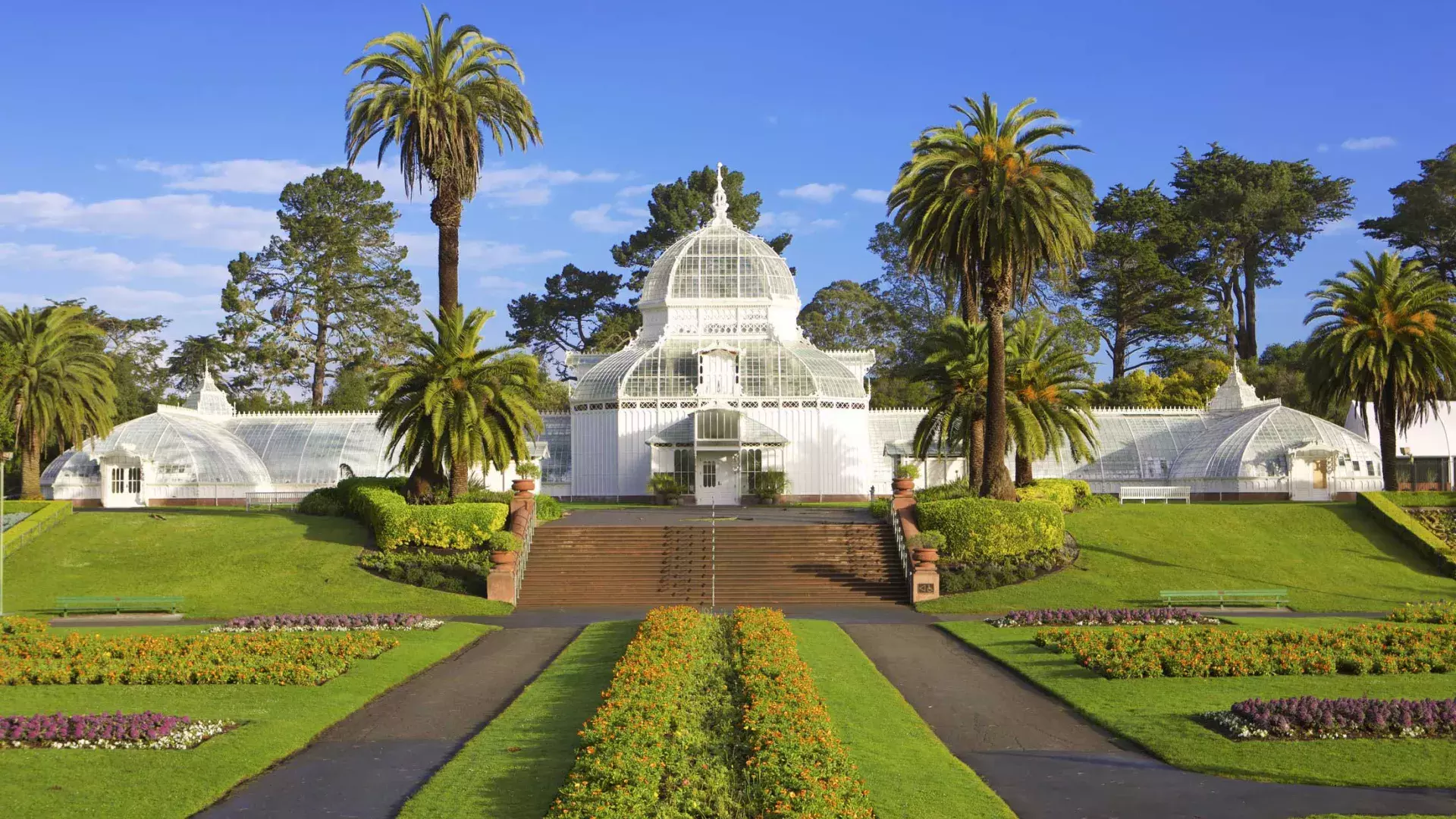
When Frederick Law Olmsted—creator of New York’s Central Park—surveyed the sandy wasteland that San Francisco’s mayor hoped to transform into a city park in 1865, he declined the project. Buffeted by winds from the Pacific and made up of bleak dunes far from the city center, the 1,000-acre expanse seemed unworthy of the effort. But Olmsted might have chuckled had he seen what became of it.
Over a century later, Golden Gate Park is everything San Franciscans love about their city: from bonsai trees and buffalo to redwoods and roller skaters, this sprawling greenspace has played host to everything from the Summer of Love to symphonies under the stars. You could spend a week exploring and still not see it all.
Golden Gate Park was the ambitious dream of 19th-century city leaders looking to transform the “Outside Lands”—a patch of remote dunes—into a public gem. Mayor Frank McCoppin hoped to fend off wealthy squatters and bolster his political influence by championing the plan. Olmsted’s refusal didn’t deter the city. Civil engineer William Hammond Hall and horticulturist John McLaren took charge, embracing a forward-thinking vision: a naturalistic park, free from the commercial trappings—casinos, racetracks, and theme villages—that were typical of the era.
Every inch of the park had to be engineered: the sand stabilized, the soil enriched, and the plants carefully chosen to survive the coastal winds. What resulted was a man-made wilderness that feels entirely organic.
Some of the park’s earliest landmarks are still among its most beloved:
The Conservatory of Flowers (1879) showcases tropical plants from South America and beyond.
Stow Lake (1893) surrounds Strawberry Hill, perfect for family strolls and pedal boat rides.
The Japanese Tea Garden, originally created for the 1894 Midwinter Exposition, is the oldest public Japanese garden in the U.S.
The Windmills, built in the early 1900s, once irrigated the park and now serve as picturesque landmarks.
Golden Gate Park has also served the city in times of need. After the devastating 1906 earthquake, displaced San Franciscans camped here in temporary U.S. Army shelters, a few of which still stand today.
In the 1930s, the Works Progress Administration (WPA) added features like the San Francisco Botanical Garden, Anglers Lodge, and the Beach Chalet, whose historic frescoes illustrate the park’s creation. One of the most dramatic additions was the Hoover Grove, where towering sequoias were planted to honor World War I casualties—putting to rest Olmsted’s critique that no proper trees could grow here.
In the 1960s, the park became a countercultural epicenter. The Human Be-In of 1967 kicked off the Summer of Love near the Haight-Ashbury entrance, where “Hippie Hill” still carries the scent of incense—and cannabis. Free concerts by the Grateful Dead and Jefferson Airplane once rocked the Panhandle, and on April 20 (4/20), the tradition continues in a haze of celebration.
The park remains a space for joy, memory, and community. The National AIDS Memorial Grove, established in 1991, honors lives lost during the AIDS crisis and offers a space for reflection.
Major annual events include:
Bay to Breakers 12K
Outside Lands (a major music and food festival)
Hardly Strictly Bluegrass, a free three-day concert
Holiday Lights, drawing families each December
In 2020, to celebrate the park’s 150th anniversary, artist Charles Gadeken’s light installation Entwined illuminated Peacock Meadow, and a temporary SkyStar Wheel ferris wheel was added (extended through March 2025).
Other recent highlights:
Sunday Roller Disco Party near 6th Ave and JFK Drive
Flower Piano in the Botanical Garden — where public pianos are scattered among the plants each summer for anyone to play, alongside lessons and singalongs.
Golden Gate Park stretches over three miles long and a half-mile wide, with many entrances and paths to explore. The Panhandle entrance via Fell Street is popular, but 9th Avenue off Lincoln Way is closest to key attractions like the de Young Museum, the California Academy of Sciences, and the SkyStar Wheel.
By Car:
Over 4,700 street parking spaces throughout the park
Accessible parking at McLaren Lodge, Music Concourse, and Transverse Drive
Music Concourse Garage: $33/day, open 7 AM–7 PM daily (via Fulton St at 10th Ave)
By Public Transit:
Numerous MUNI bus and trolley lines serve the park; check local schedules for the best route based on your entry point.
By Shuttle:
A free park shuttle runs every 15–20 minutes on weekends and city holidays from 9 AM to 6 PM, looping key park locations.
By Foot, Bike, or Skate:
The park is ideal for walking, biking, or skating. Several roads—like JFK Drive—are now part of the city’s Slow Streets program, closed to vehicle traffic on weekends to encourage recreation.
Golden Gate Park is open 24/7 and ever-evolving — a place where San Francisco’s past, present, and spirit of experimentation all come together under redwoods and rolling fog.
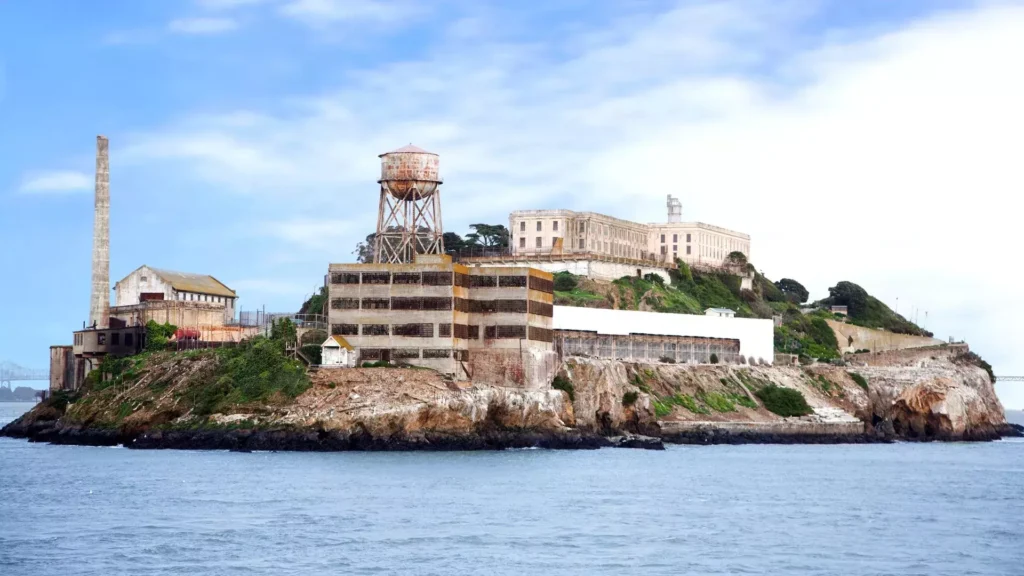
For over 150 years, Alcatraz has symbolized isolation, punishment, and defiance. Located in San Francisco Bay, the 22-acre island was first documented in 1775 by Spanish explorers and became a US military fort in 1859. It later served as a prison for Civil War deserters, Native American resisters, and, eventually, some of America’s most notorious criminals like Al Capone and “Machine Gun” Kelly.
In 1934, Alcatraz became a federal maximum-security prison, infamous for its harsh conditions and escape-proof reputation—though in 1962, three inmates managed a daring, never-resolved escape. The prison closed in 1963 due to high operating costs.
In 1969, Native American activists occupied the island for 19 months, demanding land rights and an end to federal assimilation policies. This historic act helped galvanize the American Indian Movement and led to broader awareness of Indigenous rights.
Today, Alcatraz is a top national park destination, drawing over a million visitors annually. Tourists explore its layered history through audio guides, preserved graffiti, and dawn Un-Thanksgiving ceremonies that honor Native resistance.
Visitor Info:
Accessible by ferry from San Francisco, Alcatraz is open daily except major holidays. Tours range from $25–$41, with family and specialty options available. Accessibility features include braille, ASL support, and an on-island tram for visitors with mobility needs.
More details: www.alcatrazcruises.com
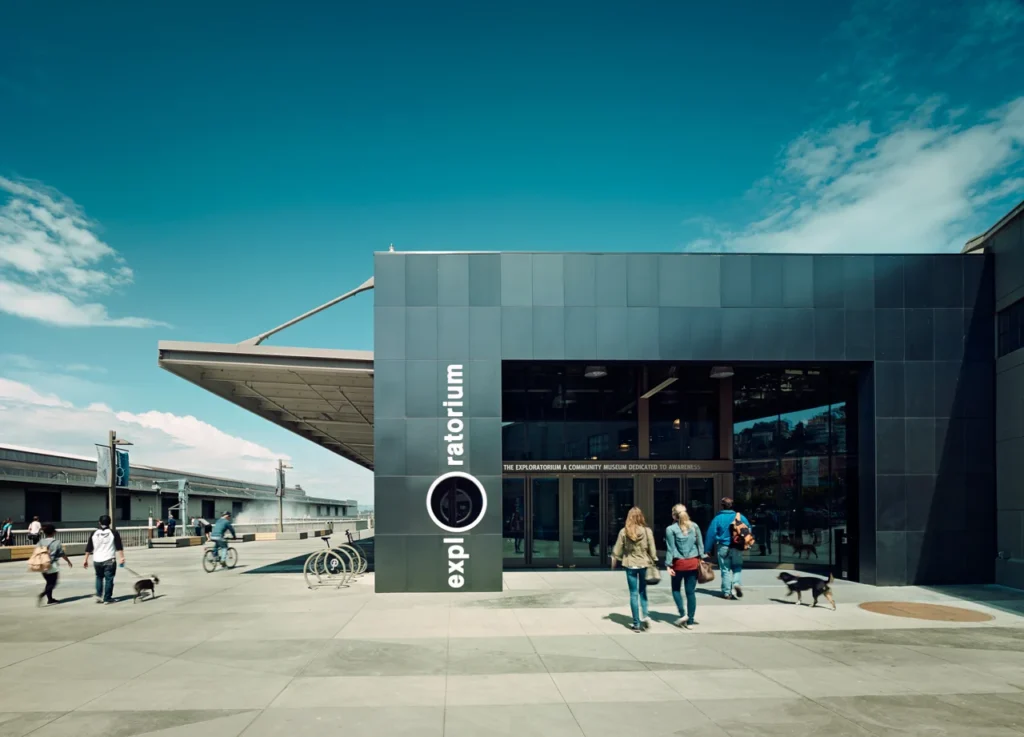
The Exploratorium in San Francisco is a one-of-a-kind hands-on science museum that blends science, art, and human perception. Located on Pier 15, this 9-acre indoor-outdoor space invites visitors to explore over 600 interactive exhibits—ranging from optical illusions and light experiments to sound, motion, and social behavior.
What to Explore:
Each gallery explores a unique theme:
Human Phenomena Gallery looks at behavior and emotions.
Tactile Dome (extra fee) offers a pitch-dark maze of textures.
Tinkering Gallery features playful inventions and moving sculptures.
Bechtel Gallery plays with light, reflection, and color.
Living Systems Gallery dives into biology, tides, and microscopic life.
Outdoor Gallery focuses on wind, earthquakes, and bay science.
Fisher Bay Observatory connects weather, geography, and data about the Bay Area.
Visitor Info:
Hours: Wed–Sat 10AM–5PM, Sun 12PM–5PM. Closed Mon & Tue. Adults-only night on Thursdays from 6PM–10PM.
Tickets: $29.95 for adults, $24.95 for seniors/teens/teachers, $19.95 for kids (under 3 free).
Location: Pier 15, walkable from Embarcadero BART station.
Food: Two on-site spots—Seaglass Restaurant and Seismic Joint Café.
Accessibility:
Fully wheelchair accessible with tactile maps, assistive listening devices, and ASL interpreters available upon request. ADA aides enter free. Discounted tickets for visitors with disabilities are available by phone or email.
A Bit of History:
Founded in 1969 by physicist Frank Oppenheimer, the Exploratorium was designed to bring science and society together. Its current home at Piers 15 and 17 is solar-powered and wired with real-time environmental sensors thanks to a partnership with NOAA.
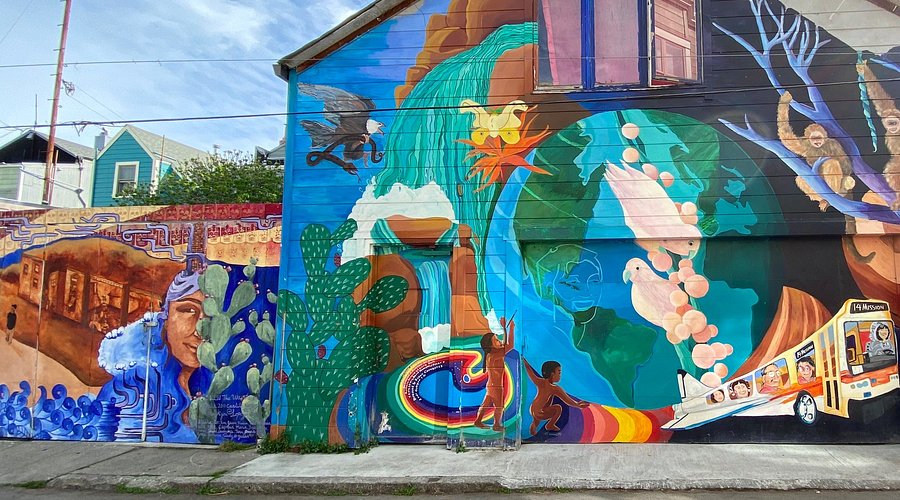
San Francisco’s Mission District is world-renowned for its vivid murals, with Balmy Alley serving as the heart of this living public art gallery since the 1970s. Located between 24th and 25th Streets, this narrow alley showcases a powerful collection of murals rooted in Chicano art traditions and political activism, known as murialismo—an aesthetic with pre-Hispanic and revolutionary Mexican roots.
The mural movement gained momentum in the 1970s alongside the rise of the Chicano and civil rights movements. Artists like Patricia Rodriquez and Graciela Carillo, founders of Mujeres Muralistas, broke new ground by integrating domestic and ecological themes into a space often dominated by overt political messages. The movement expanded with the PLACA project, which used art to protest U.S. intervention in Central America and highlight immigrant struggles.
Murals in Balmy Alley honor a wide range of voices, from Archbishop Óscar Romero to artists like Frida Kahlo, while reflecting broader histories of resistance, identity, and community. Restoration efforts continue to preserve works like Culture Contains the Seed of Resistance and The Primal Sea.
How to Visit:
Getting there: Take BART to 24th/Mission and walk east ~5.5 blocks.
Tours: Nonprofit Precita Eyes offers weekend mural tours ($3–$20 depending on age and residency).
Food + Art: Edible Excursions combines a mural walk with Mission District culinary tastings ($125 on Saturdays).
Legacy and Impact:
The Mission’s murals have not only transformed the neighborhood but inspired public art movements across the U.S. Balmy Alley stands today as a vibrant intersection of art, culture, and activism—an open-air museum telling stories of struggle, resilience, and community.
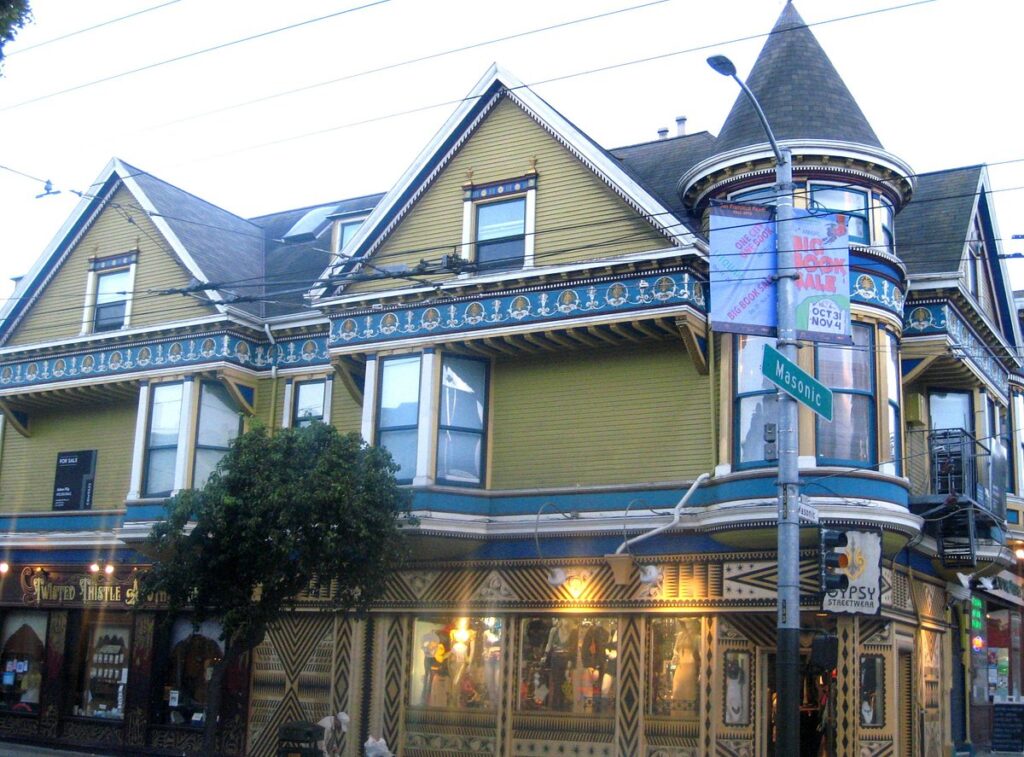
The Haight-Ashbury district of San Francisco became the heart of 1960s counterculture, where hippies, artists, activists, and misfits created a vibrant, if chaotic, community. Immortalized by the Summer of Love in 1967, its streets were filled with pot smoke, psychedelic posters, draft card burnings, and revolutionary energy. The Grateful Dead, Janis Joplin, Jefferson Airplane, and other icons lived just blocks apart, while groups like the Diggers ran free clinics and communal kitchens.
But Haight’s story began long before the ’60s. Its elegant Victorian homes survived the 1906 earthquake, later falling into neglect before becoming affordable havens for young radicals. A mix of Black homeowners, Beat poets, queer activists, and student organizers laid the foundation for the neighborhood’s unique spirit of resistance and creativity.
While the scene was idealistic and artistic, it wasn’t without darkness—addiction, homelessness, and disillusionment crept in quickly, as famously reported by Joan Didion.
Today, Haight-Ashbury blends nostalgia and gentrification. Indie shops, cannabis dispensaries, and vintage stores rub shoulders with upscale restaurants and restored Victorians. Murals like Evolution Rainbow still speak of transformation, and spots like Amoeba Music, Magnolia Brewery, and the Haight-Ashbury Free Clinic carry the old spirit forward. With tie-dye shirts and open minds still in circulation, the neighborhood continues to evolve—but the echoes of rebellion remain.

San Francisco’s Chinatown—the oldest in North America and the largest outside Asia—has stood for nearly 200 years as a vibrant hub of Chinese American culture, resilience, and community. Spread across 22 blocks and 41 alleyways, it tells the story of generations of immigrants who shaped not just the neighborhood, but the city itself.
A History of Survival and Identity
Chinese immigrants first arrived in 1848, mostly from Guangdong’s Pearl River Delta, seeking better lives. By the 1880s, Chinatown had grown near Portsmouth Square and began to attract both newcomers and tourists. But backlash followed—racism, the Chinese Exclusion Act, and public health scapegoating during the 1900 plague and 1906 earthquake nearly destroyed the neighborhood.
Still, Chinatown rebuilt—taller, stronger, and more distinctly Chinese—with a unique blend of traditional and Western architecture. Iconic sites like the Tin How Temple on Waverly Place have welcomed worshipers since the 1850s.
Culture, Cuisine, and Community
Throughout the 20th century, Chinatown became known for Prohibition-era hideaways, glamorous nightclubs like Forbidden City, and American-Chinese inventions like chop suey. Beloved restaurants such as Sam Wo (since 1912), Hang Ah Tea Room, and Mister Jiu’s remain local treasures.
Even as Chinatown flourished, it faced challenges. Activists like Rose Pak and Gordon Chin worked tirelessly to preserve affordable housing and resist gentrification. Today, that fight continues as residents face renewed anti-Asian racism in the wake of COVID-19.
What to Do and See
Start your visit at the Dragon’s Gate, then wander through historic alleys like Ross Alley and Wentworth Place. Visit the Golden Gate Fortune Cookie Factory, explore exhibits at the Chinese Historical Society of America, and support local businesses. Guided walking tours offer deeper insight into the neighborhood’s layered past.
The best time to experience Chinatown? Lunar New Year, when lanterns glow, lion dancers parade, and firecrackers echo through the streets—reminding everyone that San Francisco’s Chinatown is not just a neighborhood, but a story of survival, culture, and pride.

Grace Cathedral on Nob Hill is more than just a church—it’s a symbol of San Francisco’s perseverance, progressive values, and community spirit. Rebuilt three times since the Gold Rush, the cathedral’s current reinforced concrete Gothic design took 40 years to complete and stands as one of the city’s architectural and cultural treasures.
Unlike traditional cathedrals, Grace embraces both spirituality and social justice. Its stained-glass windows honor science and activism, with tributes to Albert Einstein, the 1945 UN Charter, and Quaker abolitionists. The Interfaith AIDS Memorial Chapel, with a powerful bronze altarpiece by Keith Haring, underscores the church’s legacy of compassion and advocacy.
Inside, visitors walk the stone labyrinths—tools for spiritual reflection—and marvel at artworks that celebrate a range of faiths, from Orthodox icons to Florentine replica doors. The cathedral also hosts inclusive programming like candlelit meditations, Yoga for Change, and world-class choral performances.
Tours & Visitor Info:
Tours: 10AM select days, $25 (book in advance).
Services: Sundays at 8:30AM, 11AM (Choral Eucharist), and 6PM (Vespers); weekday morning prayers at 9AM.
Self-guided apps: GraceGuide features themed audio tours and a scavenger hunt for kids.
Address: 1100 California Street. Best accessed via cable car, MUNI, or BART. Limited parking is available in nearby garages.
Grace Cathedral remains a welcoming place for worship, reflection, art, and activism—a true spiritual heart of San Francisco.
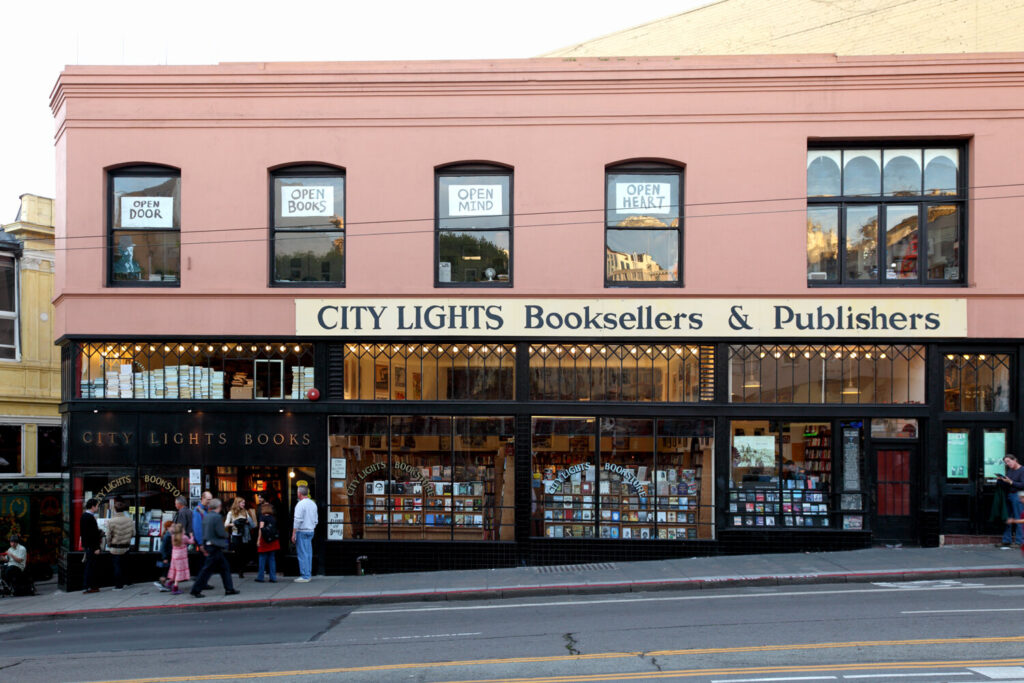
Since opening in 1953, City Lights in San Francisco’s North Beach has become a legendary hub for progressive politics, literature, and free speech. Founded by poet Lawrence Ferlinghetti and initially co-owned by professor Peter Martin, the bookstore quickly established itself as a haven for Beat writers and radical ideas.
In 1955, Ferlinghetti launched City Lights Publishing, introducing the iconic Pocket Poets Series. The press famously published Allen Ginsberg’s Howl, leading to a landmark 1957 obscenity trial that cemented City Lights’ place in literary and legal history. This victory helped propel the Beats—and the bookstore—onto the national stage.
City Lights steadily expanded its quirky triangular building, including a cellar once used by a 1930s cult and later filled with books arranged around provocative countercultural themes. Known as “A Kind of Library Where Books Are Sold,” the shop encourages leisurely browsing and discovery.
Though Ferlinghetti passed away in 2021, City Lights continues to publish marginalized voices, including Latinx, LGBTQIA+, and incarcerated writers. Visitors today can explore zines, themed sections like Pedagogies of Resistance, and relax in the Poet’s Chair overlooking Vesuvio Cafe—the historic hangout of Ferlinghetti, Jack Kerouac, Bob Dylan, and others.
Visiting City Lights
Open daily 10 AM to midnight, the shop is accessible by multiple bus lines and near Montgomery Muni Station. Nearby parking includes metered street spots and garages by Portsmouth Square and in Chinatown. City Lights hosts weekly author readings, currently held online—check their Instagram, Facebook, or Twitter for event updates.
WhatsApp us